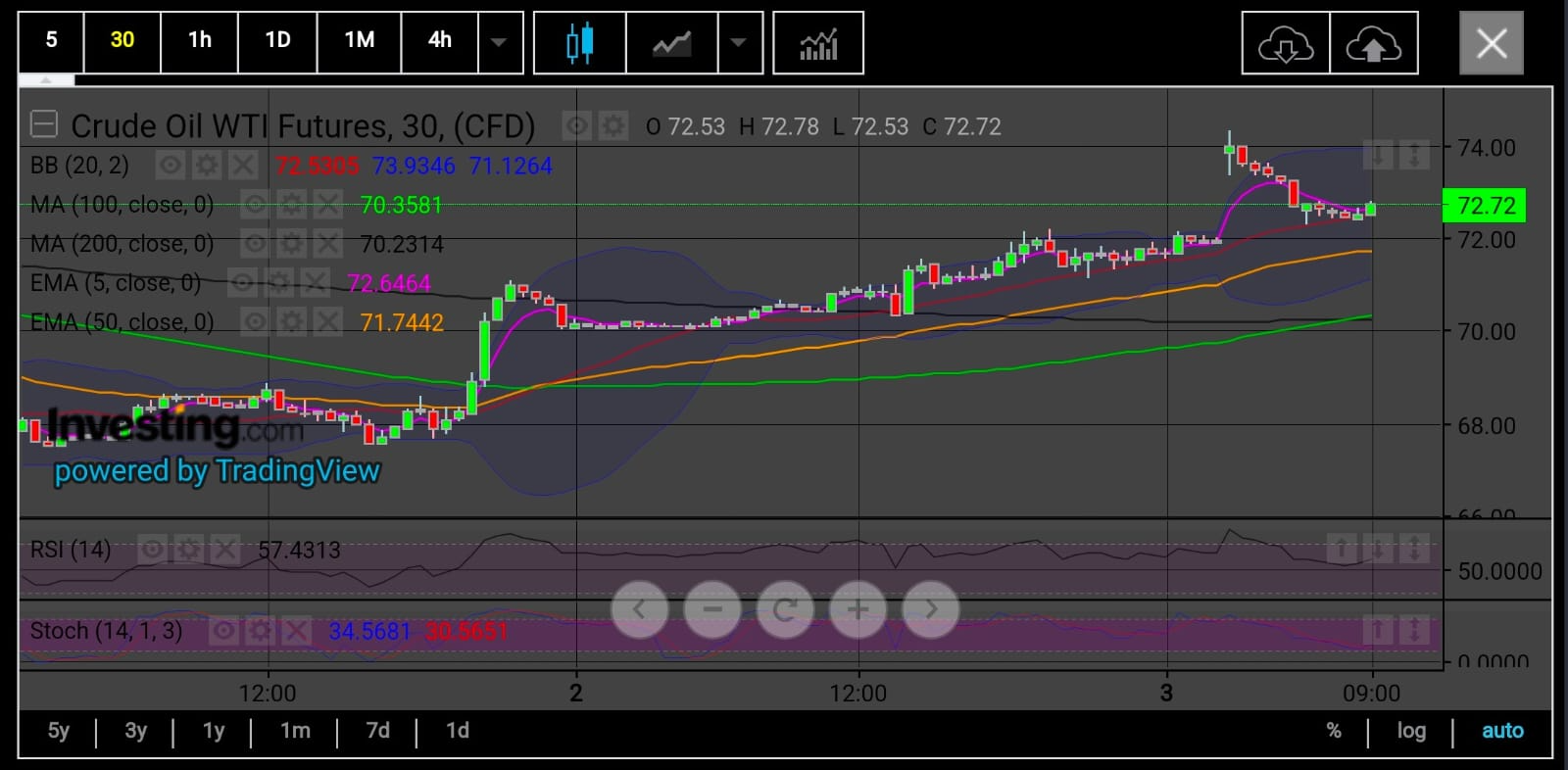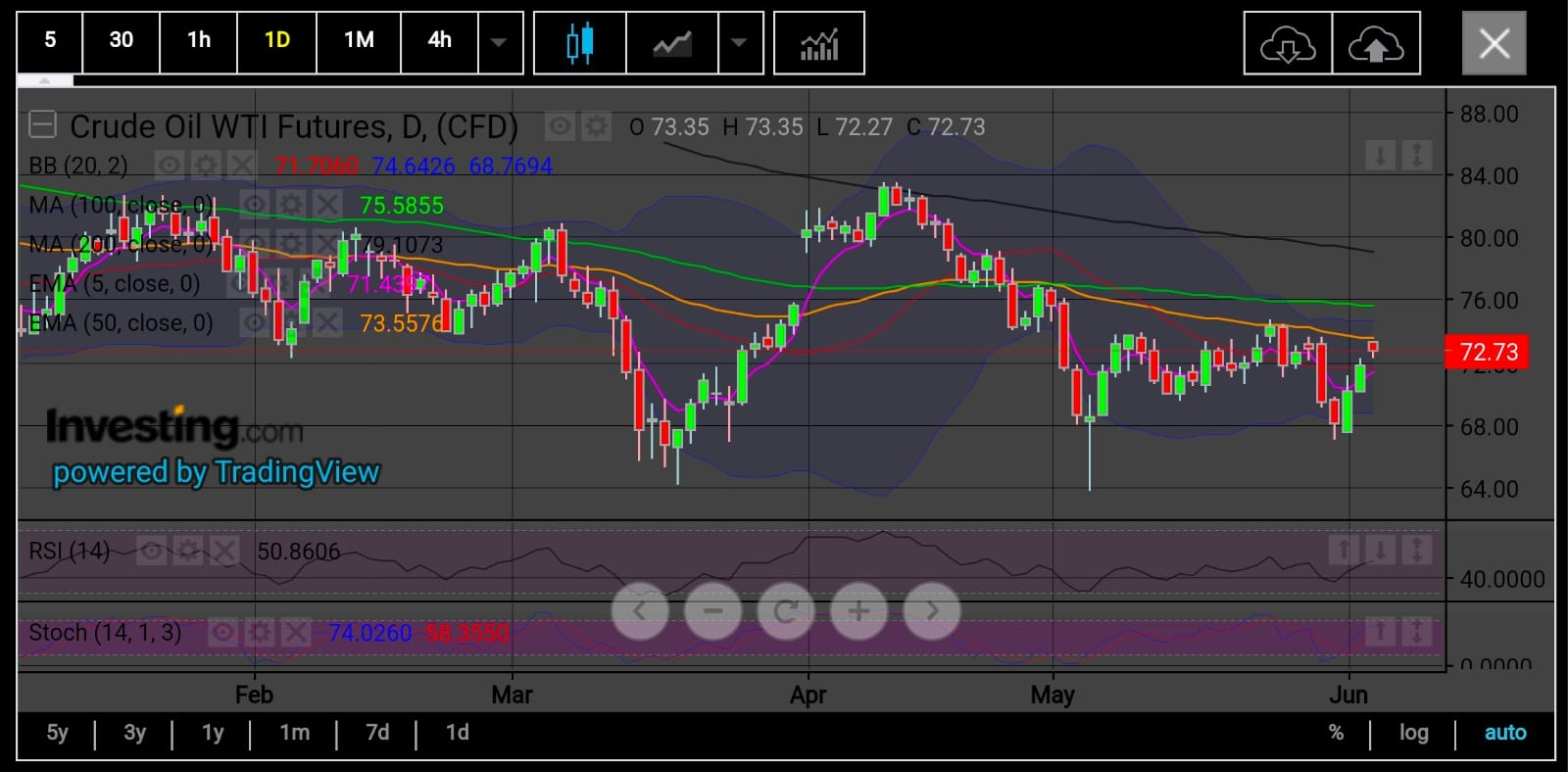For the benefit of the rolling cameras, Saudi Energy Minister Prince Abdulaziz bin Salman triumphantly declared that the rest of OPEC+ will keep to promised oil cuts till 2024 while the kingdom itself will slash an additional million barrels per day next month. Beaming, he added:
“It is really a great day for us because the quality of the agreement is unprecedented and I would have to say the quality of cooperation is unprecedented.”
The OPEC+ delegates around him were smiling, too, probably because they knew they’d be producing while the Saudis were vowing to double down on cuts.
The journalists in the room scribbled into their notepads, wondering but probably afraid to ask the obvious of the prince, who despises dissenting reporters as much as he hates the short-sellers in oil. And that question would be:
“Your Excellency, doesn’t this deal actually suck for the Saudis?”
The real deal of the just-concluded OPEC+ meeting, held in person for only the second time since the pandemic, was there was no unprecedented deal — not at least the kind described by Abdulaziz.
This is because, in the three years since the COVID outbreak that took oil prices to minus $40 per barrel, demand for the commodity is almost back to pre-pandemic levels, with several caveats though. And those are:
- Slower-than-anticipated oil demand in top importer China
- Fears of a global recession
- Inflation in the United States that refuses to go down as quickly as the authorities want, despite more than a year of aggressive rate hikes by the Federal Reserve
Enter OPEC+ and its production cuts.
Oil revenue is the lifeblood of the economies in OPEC, or the Organization of the Petroleum Exporting Countries, a 13-member Saudi-led group whose main objective is to be the price-setter of the commodity.
Ten other oil-producing states, including Russia that aren’t OPEC members have also been keeping their output closely in line with the group’s for the sake of price. The 23-nation alliance is collectively known as OPEC+.
For core OPEC members like Kuwait and Iraq, more than 90% of all their revenue comes from oil. In the United Arab Emirates, oil accounts for 13% of exports and 30% of GDP, and in Algeria, it’s 25% of GDP.
In Saudi Arabia, OPEC’s largest member, oil accounts for 70% of total export value and 53% of government revenue. That’s not all. Media reports say the Saudis need at least $500 billion or as much as $8.5 trillion (the numbers keep fluctuating) to successfully diversify their economy away from oil.
Thus, it’s easy to see why OPEC — particularly Saudi Arabia, which needs a barrel at more than $80 to realize its ambitious plans — would go to any extent to get the price it wants.

OPEC’s answer to low oil prices has always been production cuts that deprive the market of millions of barrels of crude per day to create an artificial supply squeeze that ultimately pushes the market higher.
But in a global economy with the sort of caveats mentioned earlier, short-sellers, or those betting on lower oil prices, have won more often than OPEC — despite world oil supplies being at one of their lowest in years.
This has rankled Abdulaziz enough that he has repeatedly warned since he took his post in 2019 that he will make the speculators who are short on oil “ouch” — his favorite expression for causing hurt.
On several occasions over the past four years, the Saudi prince has gloated at his ability to produce this so-called ouch — typically each time after he announced a substantial and unexpected production cut. To the detriment of the prince, however, the pain has often moved quickly from the short-sellers back to OPEC, which had seen prices drop despite the cuts.
It was this setting that the latest OPEC meeting came into. Some two weeks before the event, the Saudi energy minister again warned the short-sellers in oil to “watch out,” triggering speculation that he was planning another production cut.
But the real surprise was in what Abdulaziz’s Russian counterpart Alexander Novak had to say. Novak said he did not think a cut was necessary. The seeds of dissent had already been planted, though, in the storm that followed after Novak’s comments were published, the Russian minister quickly singled out Bloomberg for misquoting him without refuting similar accounts carried by other news services, including a Russian paper.
Then under bizarre circumstances, Bloomberg, Reuters, and The Wall Street Journal were denied media passes to cover the June 4-5 OPEC meeting. No reasons were given. Online searches by Investing.com showed that prior to the meeting, all three published stories on oil or OPEC that defied the sort of glowing narratives that Abdulaziz loved to espouse.
As the meeting itself began, things couldn’t have gone more wrongly.
Tensions between Saudi Arabia and Russia were real, and Moscow refused to add meaningfully to the 500,000 barrels it claimed to be cutting on a daily basis — which no one else in OPEC+ believed anyway but had to pretend was true to paint a picture of solidarity within the alliance. What everyone knew to be true, of course, was that to fund its war against Ukraine, Russia would sell every drop of oil it could at any price within the $60 per-barrel limit set by G7. Ask the Indian and Chinese buyers for proof of that.
Another major headache for Abdulaziz was posed by the energy ministers of the African states. They refused at first to lower the production quotas handed to them before the pandemic, despite their troubles in producing enough barrels now to meet those targets due to underinvestment in their oilfields.
Their reluctance was understandable: Once they surrendered their higher quotas for lower ones, they could not go back to producing more under the rules of Abdulaziz — who was instead trying to boost the quota of the Saudis’ closest ally, the UAE.
Abdulaziz took some of the African ministers into his suite to try and get them to agree. There’s no clarity on how many willingly succumbed to his charm offensive (or browbeating or bullying if you will). But in the end, Angola, which had been in a standoff with the Saudis from the start, gave in, according to media reports, allowing Abdulaziz to declare victory at the post-meeting news conference that followed.
But what victory was this actually?
Abdulaziz said in addition to existing OPEC+ cuts of 3.66 million barrels daily, an additional 1.4 million would now come off. But as Reuters observed in a report:
“Many of these reductions will not be real as the group lowered the targets for Russia, Nigeria and Angola to bring them into line with actual current production levels.”
Reuters also added,
“By contrast, the United Arab Emirates was allowed to raise output targets by around 0.2 million bpd to 3.22 million bpd.”
The Wall Street Journal confirmed something Investing.com had been saying for a while in its reports — that OPEC+’s production targets are typically decided by Abdulaziz himself (and, we add, his half-brother and Crown Prince Mohammed bin Salman — the chief architect of the grandiose Saudi economic remaking plan). The targets are then dressed up as OPEC+ decisions “often without consulting with other group members,” The Journal said, reinforcing our reporting on this.
Market reaction to Abdulaziz’s announcement was interesting, to say the least.
Prices for both U.S. West Texas Intermediate, or WTI crude, and U.K. Brent jumped more than $2 a barrel each ahead of their regular New York trading on Monday, opening a 'gap up' in Asian electronic trade.
But in the hours that followed, their gain on the day dropped to about 50 cents a barrel at one point before steadying at above $1 at the time of writing, at 02:30 ET (06:30 GMT). Sunil Kumar Dixit, chief technical strategist at SKCharting.com, said:
“WTI opened with a runaway gap left at $72, taking prices to $74.30. However, the gap has been largely filled in follow-up downside price action.”
“Now, $71.70 is immediate support, below which consolidation towards $71.40 and $70.50 can be witnessed. If it moves back higher, it can capture $74.30 in the near-term, and only if it sustains momentum, can the next bullish level of $75.60.”

Sticking out for the benefit of the world to hear was the Saudi pledge to cut a million barrels daily in July and repeat the same in August, if necessary. “I would have to call it the Saudi lollipop,” Abdulaziz said, likening it to a sweet Saudi gift to all those who want higher crude prices.
With the oil market at the cusp of what is typically the start of peak summer demand, crude prices should be on a higher trajectory from here. On the flip side, some of the best-laid plans in history have fallen to the wayside for the most unexpected reasons. And OPEC+ has eight months of price failure to show from two major production cuts.
Said John Kilduff, partner at New York energy hedge fund Again Capital:
“The only real thing we can see is the Saudi pledge to drop their production to 9 million barrels daily in July, after all cuts. That’s 3 million below the U.S, production of 12 million barrels. If the Saudis don’t get prices up as much as they want, they’ll drop production to 8 million next. That will be 4 million short of U.S. output. The Russians will continue to max out at 9 to 10 million barrels. So, who’s losing market share here, if not the Saudis?”
“The reality of this situation is, the rest of OPEC+ is telling the Saudis: ‘You keep cutting, we’ll keep producing.’ As for the lollipop gift, their reply would be: ‘You suck on it, Excellency.’”
**
Disclaimer: The content of this article is purely to educate and inform and does not in any way represent an inducement or recommendation to buy or sell any commodity or its related securities. The author Barani Krishnan does not hold a position in the commodities and securities he writes about. He typically uses a range of views outside his own to bring diversity to his analysis of any market. For neutrality, he sometimes presents contrarian views and market variables.
